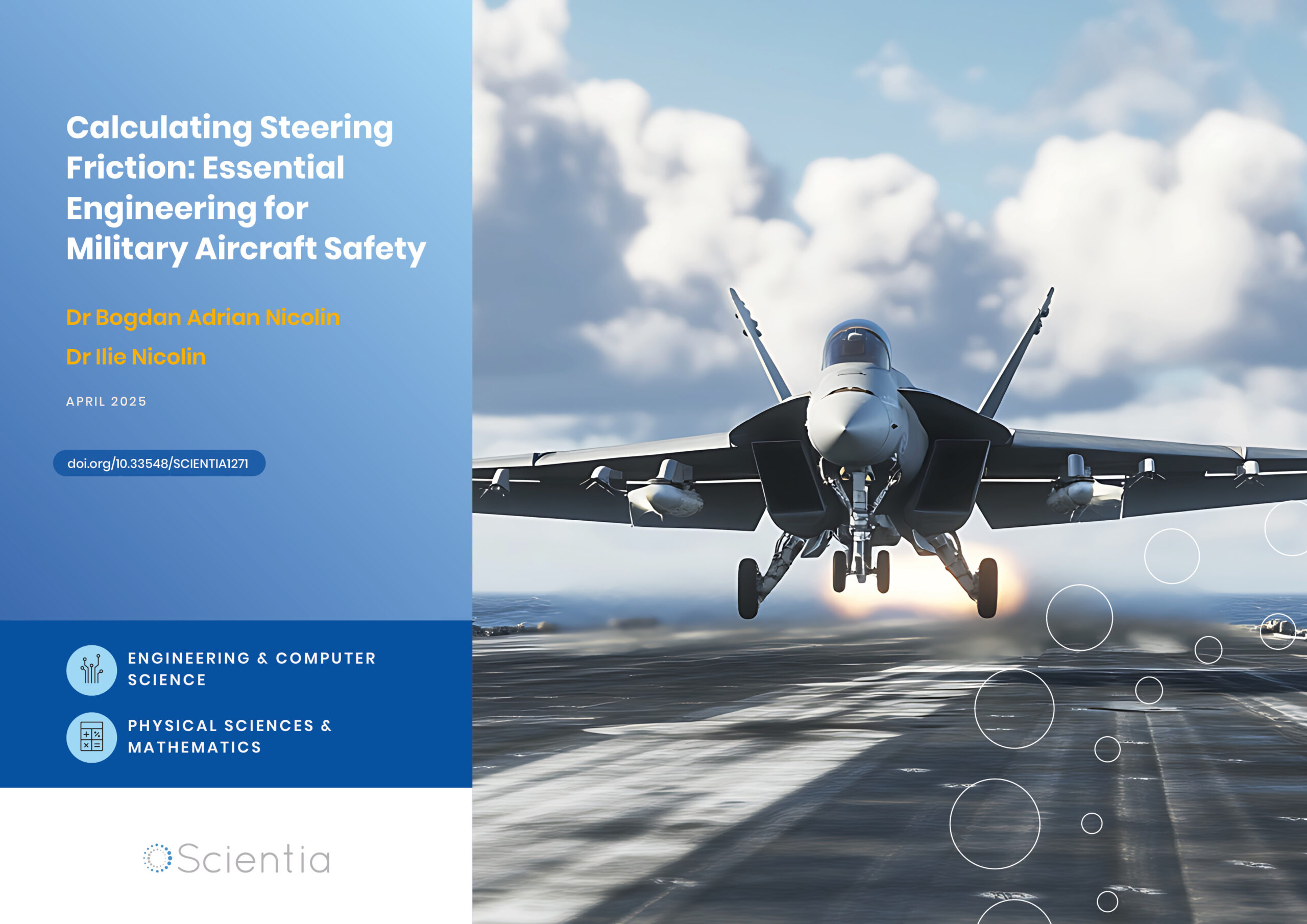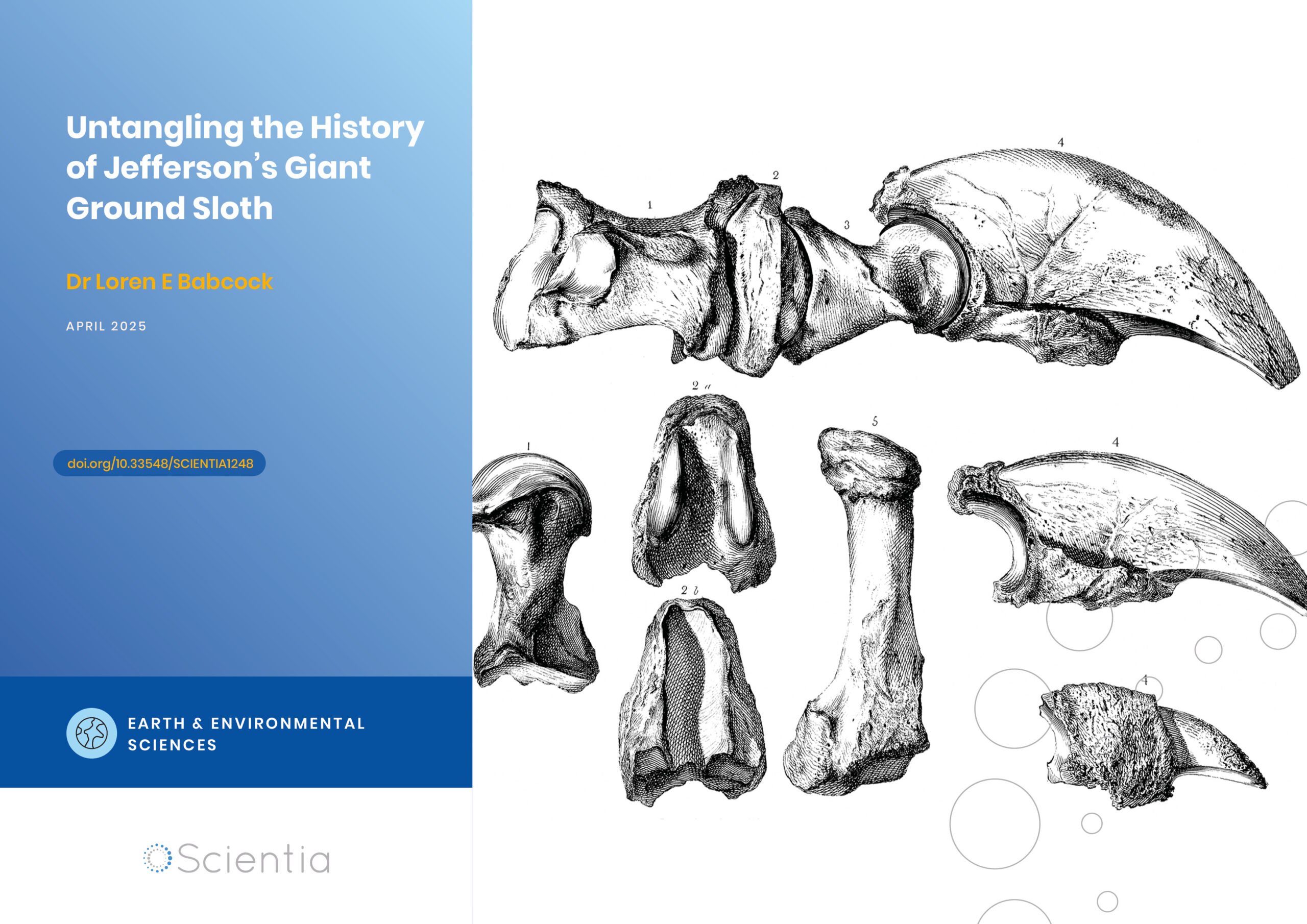TEMPO: Monitoring North America’s Pollution from Space
Created by sources ranging from campfires to cargo ships, air pollution is incredibly difficult to track. This has meant that the full impacts of air pollution are almost impossible to assess, but a solution is on the horizon. The TEMPO instrument (tempo.si.edu), built by Ball Aerospace to Smithsonian Astrophysical Observatory specifications and managed by the NASA Langley Research Center, will soon provide an all-encompassing view of pollution across North America. As part of a global constellation of satellite air quality missions, TEMPO will soon provide us with the most extensive view of pollution ever achieved, along with its impacts, allowing us to tackle it more effectively than ever before.
The Problem with Pollution
For several decades, increasingly powerful satellite-based instruments have provided us with critical insights into the physical processes that govern our atmosphere. However, when studying air pollution, even the latest technologies face a significant difficulty: the images they take have a severely limited spatial resolution, and can only be taken at daily time intervals. So far, this has prevented researchers from answering some of the most pressing questions relating to air quality, including precisely how much pollution is being emitted, where it comes from, and how it varies over time. This information is vital if we are to effectively combat atmospheric pollution and its devastating consequences for human health and ecosystems worldwide.
To address this problem, the Tropospheric Emissions: Monitoring of Pollution instrument (TEMPO) will soon be scanning for pollution across almost the entire North American continent. A global team of scientists, led by Dr. Kelly Chance at the Harvard-Smithsonian Center for Astrophysics, will analyze these most in-depth measurements to date of North American pollution, which affects both natural environments and our own health.
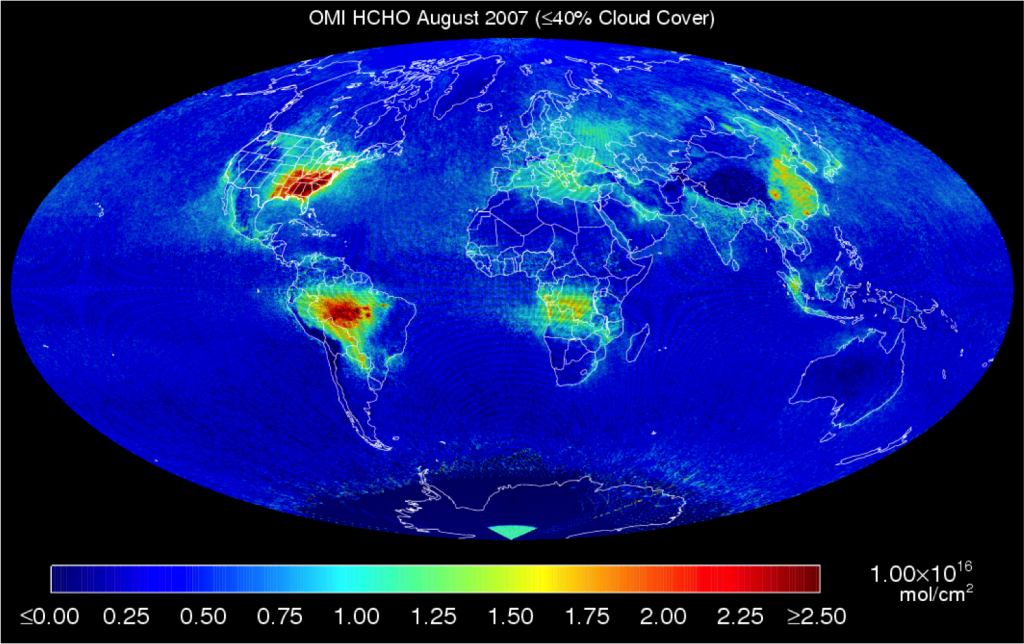
Launching TEMPO
Once in orbit, TEMPO will examine a region home to a diverse array of communities, species, and environments. ‘TEMPO is to be launched in early 2022, to measure atmospheric pollution from Mexico City, Puerto Rico, Cuba, and the Bahamas, to the Canadian oil sands in Alberta; and from the Atlantic to the Pacific,’ explains Dr. Chance.
The key to achieving this degree of coverage will be to place TEMPO in geostationary orbit – the position where satellites remain at the same point relative to Earth’s surface by orbiting above its equator, with an orbital time matching Earth’s rotation. From this position, TEMPO will be able to ‘sweep’ the entire continent once every hour – picking up incredibly small details. ‘TEMPO’s mission is to measure atmospheric pollution over North America hourly in the daytime, at a spatial resolution of around 10 square kilometers,’ says Dr. Chance.
Achieving such sophisticated measurements is no mean feat. When designing TEMPO, Dr. Chance’s team needed to incorporate instrumental capability that could take measurements of many different pollutants simultaneously. The researchers achieved this by equipping TEMPO with an advanced two-dimensional spectrometer, producing a complete atmospheric chemistry lab in space. Once the commercial communications satellite on which it sits has reached geostationary orbit, TEMPO will look down at the Earth to detect the characteristic signals of pollution hidden within reflected sunlight.
Measuring Pollution
When the Sun’s light is reflected by Earth’s surface back into space, some of it is absorbed by molecules in Earth’s atmosphere. Different molecules absorb different frequencies of light, meaning that some frequencies will be depleted from sunlight that has passed through the atmosphere. To measure atmospheric pollution, TEMPO can search for this absorption in reflected sunlight, characterizing each particular polluting chemical.
Because TEMPO has such high spatial and temporal resolutions, it will be able to pinpoint exactly where pollution is coming from, and how particular sources vary over time. ‘TEMPO will track pollution loading, transport, and transformation,’ explains Dr. Chance. ‘It also will provide near-real-time air quality products, measure the key elements of air pollution chemistry, and measure the UV exposure index.’ The TEMPO team has now planned out many experiments that are made possible by these measurements, relating to a wide range of pollution-related issues.
‘TEMPO’s mission is to measure atmospheric pollution over North America hourly in the daytime, at a spatial resolution of around 10 square kilometers.’
Over Land and Sea
One group of studies will focus on the impacts of pollution on both marine and land-based environments. The first of these experiments will measure the ever-changing behaviors of living plants – including microscopic marine plants called phytoplankton and related potentially harmful blooms of algae, named ‘red tides’.
Secondly, TEMPO will measure how emissions of a particular group of polluting chemicals, called nitrogen oxides, can escape from crop farms under certain conditions, polluting the atmosphere as well as wasting large amounts of fertilizer. ‘Here, we will make measurements of croplands to follow the temporal evolution of nitrogen oxide emissions after fertilizer application and from rain-induced emissions from semi-arid soils,’ states Dr. Chance.
Thirdly, TEMPO will measure atmospheric total column water vapor, which is one of the so-called ‘Essential Climate Variables’. The hourly high-density and high-resolution measurement can be used to monitor variability on a variety of spatial and temporal scales, providing new insights into Earth’s water cycle and valuable information for improving the accuracy of mathematical models.
Finally, the instrument will explore the involvement of molecules called halogen oxides in coastal atmospheric chemistry, as these compounds can destroy ozone in the lower atmosphere.
These studies will provide researchers with unprecedented levels of detail about the impacts of pollution on environments ranging from the jungles of Mexico to Utah’s vast salt lake.
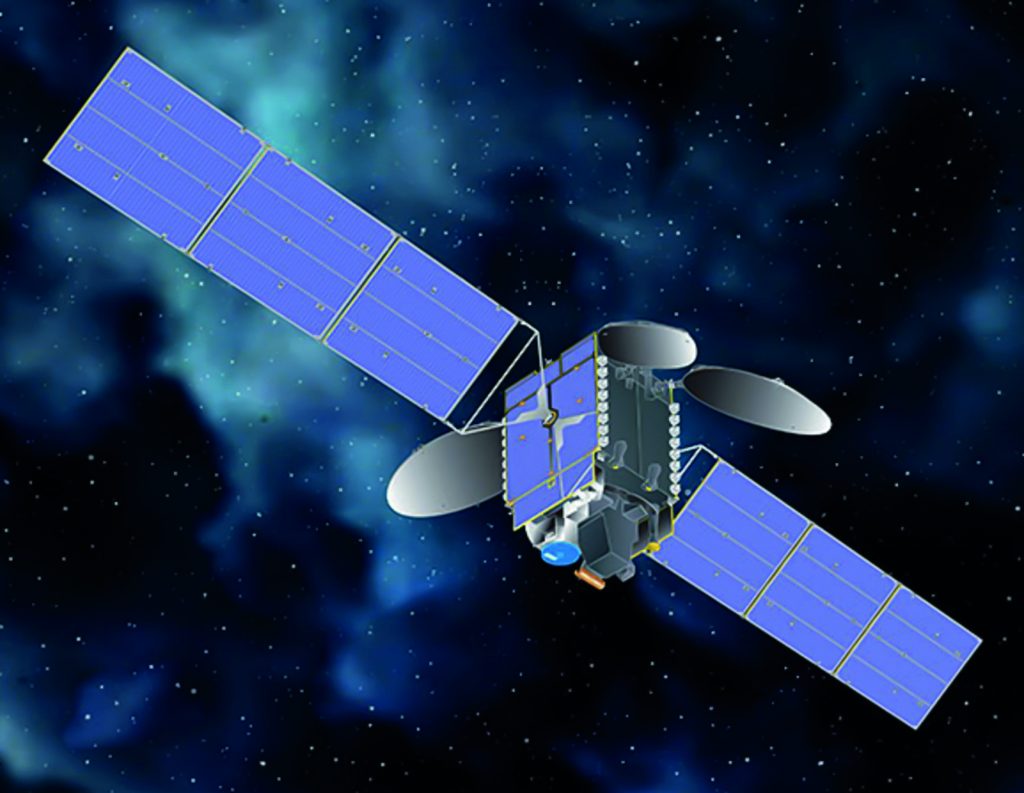
Ozone Pollution
Another group of studies will examine the complex chemistry that plays out above the Earth’s surface. The first of these studies will examine the impacts of lower atmospheric ozone. High up in the atmosphere, in the stratosphere, ozone protects us from the Sun’s harmful ultraviolet radiation. However, ozone at ground level is the worst gaseous pollutant, as it is extremely damaging to animals and plants. ‘TEMPO will take measurements of tropospheric production processes as well as stratospheric ozone intrusions that cause air quality exceedances,’ says Dr. Chance.
Secondly, TEMPO will study how thunderstorms produce polluting chemicals, and how they are spread around by air flowing outwards from storm systems. ‘We will also take measurements of thunderstorm activity, including outflow regions, to better quantify lightning nitrogen radical and ozone production,’ Dr. Chance continues. There are already satellite-based instruments that monitor the Earth’s atmosphere, but TEMPO will address critical gaps in our knowledge of how pollution, in particular, is spread by natural atmospheric processes.
Pollution from Fires
As climate change accelerates, wildfires are becoming an increasing concern for many communities worldwide. Through a further group of studies, TEMPO will provide crucial insights into the pollution caused by these disasters. The direct destruction that fires create is their most visible impact, but they also cause massive amounts of pollution – itself the subject of further studies. ‘TEMPO will investigate the chemical processing of primary fire emissions, and the secondary formation of volatile organic compounds and ozone,’ says Dr. Chance.
In addition to causing pollution, the danger of fires being started is increased by the presence of certain conditions that may be monitored by TEMPO. The instrument will help researchers to understand these risks better. These studies will allow researchers to assess the causes and effects of wildfires in unprecedented levels of detail, potentially allowing us to mitigate future disasters.
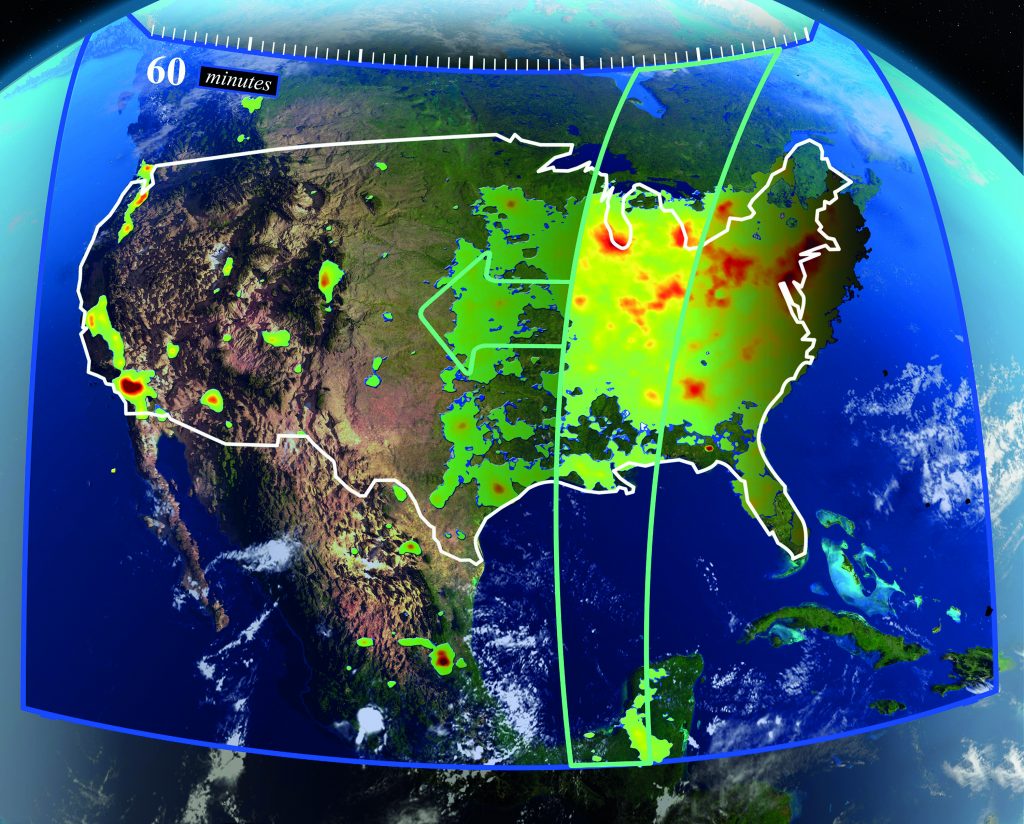
Human Activity
TEMPO will study the profound impacts of our activities, and the devastation they inflict through pollution. Transportation is one of the most significant sources of pollution we create. However, because vehicles are constantly on the move, and traffic varies widely throughout the day, the pollution it creates is incredibly difficult to track. Dr. Chance explains how TEMPO can resolve this issue: ‘We will take measurements at peaks in vehicle travel to capture the variability in emissions from mobile sources.’
In addition, light pollution is a substantial, albeit highly variable consequence of human activity. ‘TEMPO will measure patterns of night-time lights, resolved by lighting type, as markers for human activity, energy conservation, and compliance with outdoor lighting standards intended to reduce light pollution,’ says Dr. Chance.
As our activities continue to affect our home planet through climate change and environmental degradation, these observations will come at a critical time.
Constructing a Global Constellation
Having made detailed plans for such a wide array of experiments, the TEMPO team has now, with their Asian and European partners, laid the groundwork for the most extensive analysis of pollution ever undertaken. However, the TEMPO team’s work is far from over. In the next few years, the team aims to provide insights that will ramp up the capabilities of pollution monitoring over North America to levels never seen before.
‘A longer-term goal for the TEMPO mission is to improve emission inventories, monitor population exposure, and enable emission-control strategies,’ says Dr. Chance. ‘By demonstrating the utility of air quality and chemical weather measurements for North America, its capability might be included in future generations of NOAA geostationary weather satellites, for the ongoing benefit of the North American population.’
TEMPO will not be alone in its air quality monitoring, but will be joined by two other geostationary pollution-monitoring instruments. ‘TEMPO is the North American component of the upcoming global geostationary constellation for pollution monitoring. The European Sentinel-4 mission will measure pollution over Europe and the Korean Geostationary Environmental Monitoring Spectrometer (GEMS), also built by Ball Aerospace, will monitor East Asia,’ Dr. Chance explains.
Dr. Chance and his colleagues hope that these additional instruments will be as effective as TEMPO for monitoring pollution, allowing scientists around the world to make detailed, global-scale assessments of its impacts. In addition, they hope the project will engage public audiences around the world, raising awareness of the severe impacts of pollution, and what needs to be done to secure our future. At a time when the future of the Earth’s natural environment is more uncertain than ever before, these efforts could soon prove critical to assessing and mitigating our own impacts on the planet we call home.
Reference
https://doi.org/10.33548/SCIENTIA388
Meet the researchers
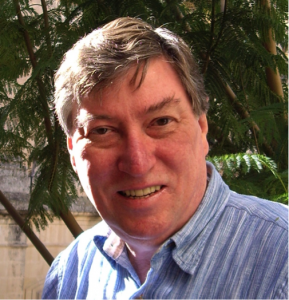
Dr. Kelly Chance
Atomic and Molecular Physics Division
Harvard-Smithsonian Center for Astrophysics
Cambridge, MA
USA
Dr. Kelly Chance is a Senior Physicist in the Atomic and Molecular Physics (AMP) Division of the Harvard-Smithsonian Center for Astrophysics (CfA), and the Principal Investigator for the NASA/Smithsonian TEMPO satellite instrument (tempo.si.edu). Dr. Chance has been measuring Earth’s atmosphere from balloons, aircraft, the ground and, in particular, from satellites, since receiving his PhD from Harvard University. His atmospheric measurements encompass the physics and chemistry of the stratospheric ozone layer, climate-altering greenhouse gases, and atmospheric pollution. Together with Professor Randall V. Martin, Dr. Chance published the textbook ‘Spectroscopy and Radiative Transfer of Planetary Atmospheres’ by Oxford University Press.
CONTACT
W: https://www.cfa.harvard.edu/~kchance/

Dr. Xiong Liu is a physicist in the AMP Division of the CfA and the Deputy Principal Investigator for TEMPO. His research focuses on remote sensing of atmospheric trace gases, especially ozone, and on aerosols and clouds. He is responsible for the TEMPO Level 0 to Level 1 algorithm and the revolutionary TEMPO ozone profile measurements, which take advantage of the first satellite instrument specifically designed to make them.
Dr. Christopher Chan Miller is a physicist in the AMP Division of the CfA. He develops realistic simulations of TEMPO data to validate the development of TEMPO data analysis. The simulations use meteorological and pollutant data from a 3D atmospheric model coupled to one that simulates how light propagates through the atmosphere. The synthetic pollution observations can also be used by early users for developing applications prior to TEMPO’s launch, such as air pollution forecasts.
Ms. Mary Dussault is a Program Manager in the Science Education Department at the CfA. She leads the Communications and Public Engagement effort for the TEMPO project, enhancing interest in and public awareness of TEMPO, in collaboration with NASA Langley Research Center.
Dr. Gonzalo González Abad is a physicist in the AMP Division of the CfA. His current research focuses on the retrieval of trace gases (formaldehyde, glyoxal and water vapor) using ultraviolet and visible spectra measured by satellite spectrometers. He is member of the TEMPO science team and is heavily involved in the development of formaldehyde retrieval for TEMPO.
Dr. Caroline Nowlan is a physicist in the AMP Division of the CfA. She leads efforts at the Smithsonian Astrophysical Observatory to analyze data from aircraft simulator instruments deployed by NASA to support TEMPO and similar missions, and to develop measurements of pollutant gases not yet measured from space but accessible to TEMPO.
Mr. Raid M. Suleiman is a physicist in the AMP Division of the CfA. He is the Data Manager for TEMPO and other atmospheric measurement projects at the CfA. He oversees development of the Instrument Operations Center, which commands the instrument and monitors its performance, and the Science Data Processing Center, which produces the hourly maps of air pollution and derived air quality products.
Dr. Huiqun Wang is a physicist in the AMP Division of the CfA. She leads efforts to develop measurements of water vapor, an Essential Climate Variable. Hourly high-density and high-resolution TEMPO measurements can be used to monitor variability on a variety of spatial and temporal scales, providing new insights into the water cycle and valuable constraints to numerical models. Applications include atmospheric rivers, corn sweat, and regional climate.
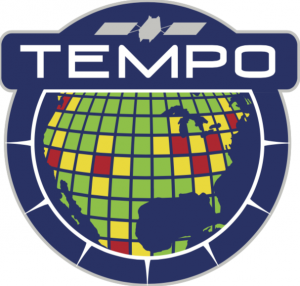

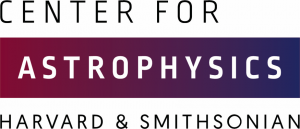

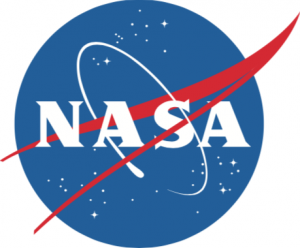
Creative Commons Licence
(CC BY 4.0)
This work is licensed under a Creative Commons Attribution 4.0 International License. 
What does this mean?
Share: You can copy and redistribute the material in any medium or format
Adapt: You can change, and build upon the material for any purpose, even commercially.
Credit: You must give appropriate credit, provide a link to the license, and indicate if changes were made.
More articles you may like
Calculating Steering Friction: Essential Engineering for Military Aircraft Safety
The safe operation of military training aircraft depends on precise engineering calculations that most of us never consider. Dr Bogdan Adrian Nicolin and Dr Ilie Nicolin from the National Institute for Aerospace Research in Romania have developed sophisticated methods to calculate the steering friction moment in military aircraft. This critical engineering parameter ensures that pilots can safely control aircraft during taxiing, take-off, and landing – making their work essential for both pilot training and flight safety.
Professor Robert B Heimann | Culinary Craftmanship: The Evolution of Pottery for Cooking
Cooking food is arguably one of the most important transitions in human evolution, and initiated hundreds of thousands of years of refinement in both technique and technology. Professor Emeritus Robert B Heimann of TU Bergakademie Freiberg, Germany, recently reviewed the evidence for early cooking vessels and tracks the evolution of their production, identifying important strategies of optimisation using various natural materials, firing methods, and designs to improve durability, functionality, and efficiency over time.
Dr Loren Babcock | Untangling the History of Jefferson’s Giant Ground Sloth
In the spring of 1796, workers mining saltpetre in a western Virginia cave unearthed several unusual bones. This would launch the scientific study of extinct animals in North America and connect one of America’s founding fathers to the early development of palaeontology. Some of these mysterious bones eventually made their way to future US President Thomas Jefferson at his Monticello estate. Dr Loren Babcock from The Ohio State University’s School of Earth Sciences has conducted an extensive review of the complex naming history of this iconic extinct animal. His research untangles over 200 years of inconsistent scientific terminology and establishes the definitive nomenclatural history of what would become known as Megalonyx jeffersonii.
Epigenetic Mysteries Unravelled: The Zinc-Finger Proteins
Exploring the complex mechanisms of cell development processes and DNA structure is critical to understanding how certain diseases, such as cancer, can arise. Professor Danny Reinberg and Dr Havva Ortabozkoyun from the University of Miami in Florida, USA, work to reveal the epigenetic mechanisms at play during cell division and development and, in turn, disease processes. Together, they are discovering new protein molecules involved in genome organisation, deepening our understanding of how cancers and other related conditions can develop.

